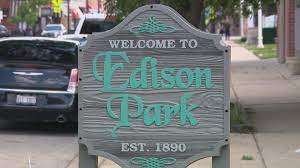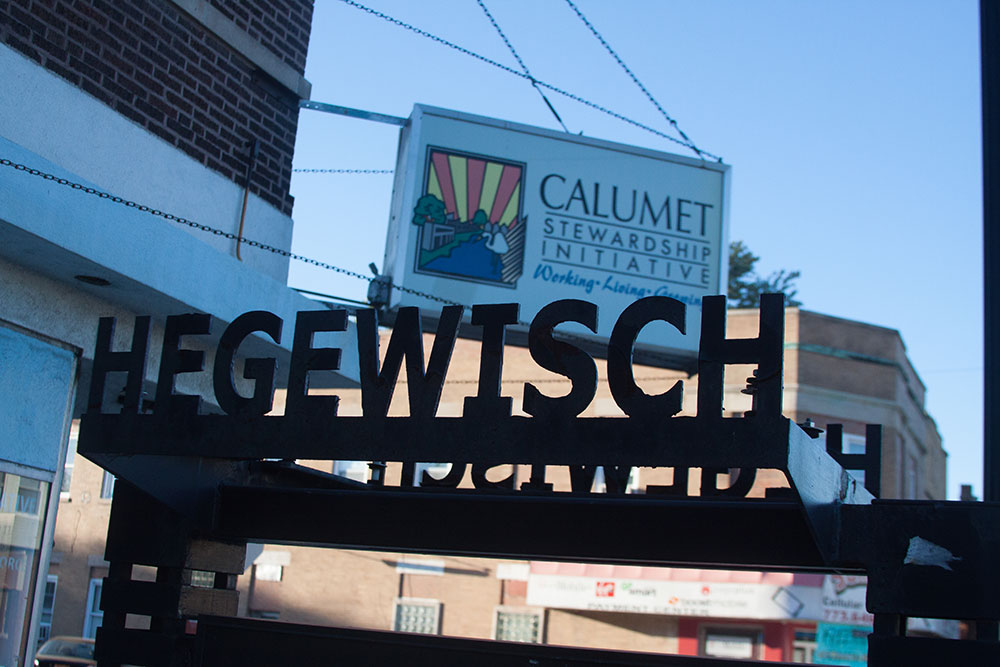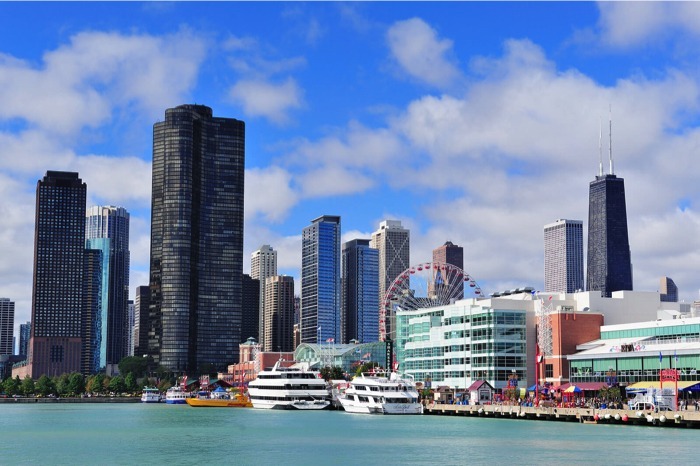
The Streeterville neighborhood of Chicago is situated in the Near North Side district and is bordered by the Chicago River to the south, the Magnificent Mile sector of Michigan Avenue to the west, and Lake Michigan to the north and east. According to most sources, the City of Chicago only recognizes a portion of this area as Streeterville. This area is referred to as the Magnificent Mile region plus the land east of it. Navy Pier, a popular tourist spot, can be found in the southern portion of Streeterville and extends out into the lake. The vast majority of the land in the locale is comprised of reclaimed sandbar.
George Streeter’s namesake district is home to a variety of establishments, including hotels, eateries, office complexes, residential towers, universities, medical centers, and cultural establishments. At the beginning of the 21st century, many vacant patches in Streeterville have been transformed into residential and commercial buildings, with a focus on the southern region. Both after World War I and II, the district had seen a surge in improvements.
Prior to the American colonization of the Chicago region, the lake’s shoreline altered from one year to the next as storm waves wore away some parts and constructed up the shore in other places. In 1803, when United States soldiers began the development of Fort Dearborn, a sandbar at the river’s mouth caused it to turn southward and enter Lake Michigan at about the same level as Madison Street today. In 1821, when it was surveyed, the Lake Michigan shoreline north of the river ran alongside what is now North Saint Clair Street, just east of what is now Michigan Avenue. In 1834, after several unsuccessful attempts to dig through the sandbar at the river’s mouth, they built a 1,500-foot pier to guard a channel that had been cut through it. Dirt and sand collected to the north of this pier, creating available land that was later nicknamed “The Sands”. Property owners became upset when squatters and a vice district made their way into the area. In 1857, Mayor John Wentworth expelled these trespassers from the land.
In the late 1800s, George Streeter declared that his recently acquired vessel was stranded on a sandbar off the coast of Chicago during a storm. To construct Lake Shore Drive, the Lincoln Park Board had filled in 186 acres of land along the lakefront, which Streeter attempted to declare as his own. Streeter asserted that this newly made land was his and that it constituted an autonomous domain which he named the District of Lake Michigan.
In the following decades, Streeter would continue to make his arguments, sometimes breaking the law to do so. At his 1902 land fraud trial, a witness testified that Streeter had planned to challenge the claims of the wealthy shoreline owners by having Contractor Hank Brusser fill in sections of the shoreline to make the land titles unclear. According to Brusser, Streeter had said “They will have to buy us off” and that “We’ll get a million out of it”. In addition, Streeter was motivated by the money he made from reselling and taxing the land he claimed.
The media’s fascination with Streeter’s boldness and his claim to the district captivated the public. Mayor William Hale Thompson sought to oust the Streeters for liquor sales, but after multiple eviction attempts and shootouts, Streeter ended up in prison. In 1918, the courts decided against his stated authority. Nowadays, some of the most expensive land in Chicago is located in the area.
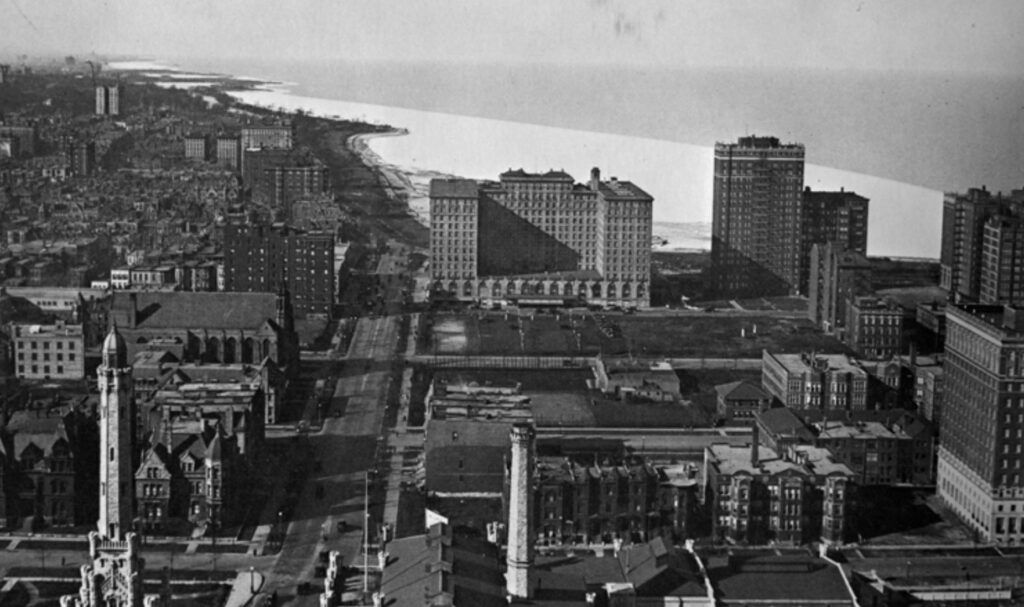
The construction of the Michigan Avenue Bridge in 1920, which was a part of the Burnham Plan of 1909, coupled with the economic boom of the 1920s, brought prosperity to the eastern side of the Near North Side, setting the stage for a luxury shopping district on North Michigan Avenue. Investors then constructed high-rise apartment buildings like those in the East Lake Shore Drive Historic District, as well as grand hotels. The bridge connected to a North Michigan Avenue that replaced the former Pine Street, with warehouses and factories near the river, and large mansions and rowhouses in the McCormickville and Streeterville neighborhoods. The architecture of the Magnificent Mile during the 1920s economic boom was a combination of Beaux-Arts classicism, Gothic revival, and vertical-style modernism. This variety of styles transformed the Chicago skyline, giving a new meaning to urban context and design.
In the aftermath of World War II, there was a rapid development of the area, and the city implemented a plan for urban renewal in the 1950s. Arthur Rubloff, a local real estate tycoon, was responsible for the revival of North Michigan Avenue, which he branded as “The Magnificent Mile”. His achievement prompted new high-rise apartments and investments to be made in the Near North Side. This triggered what is now called “canyonization” of Michigan Avenue, with the buildings on either side of the street towering above, forming an “urban canyon”.
Streeterville Today
The Magnificent Mile typically serves as the western boundary of Streeterville, however the City of Chicago and the Streeterville Organization of Active Residents have asserted that the boundary goes an additional block west and ends at Rush Street. Streeterville is home to some of the city’s highest skyscrapers, such as the John Hancock Center, and is known for its high-end stores, hotels, and eateries.

While Northwestern University’s main campus is situated in Evanston, Illinois, the university also has an establishment in Chicago. This campus contains the Feinberg School of Medicine, which is connected with several nearby hospitals, such as Northwestern Memorial Hospital, the Ann & Robert H. Lurie Children’s Hospital of Chicago, the Prentice Women’s Hospital, and the Rehabilitation Institute of Chicago. The Prentice Women’s Hospital was inaugurated in October 2007 and the Ann & Robert H. Lurie Children’s Hospital of Chicago was built in June 2012. The Rehabilitation Institute of Chicago is in Streeterville, and a different location in the same area was started in 2013. In the vicinity of the Chicago campus, there is also the Northwestern University School of Professional Studies part of the Kellogg School of Management. The Northwestern University Pritzker School of Law is near Chicago Avenue and Lake Shore Drive, next to Lake Shore Park and Lake Michigan. At the western end of the park, there is the Museum of Contemporary Art, Chicago. The University of Chicago Booth School of Business has a downtown campus placed on the banks of the Chicago River to the south. On the east side of the Magnificent Mile, there is Navy Pier, which is the most visited attraction in Chicago, and the John Hancock Observatory, which is the eighth-most visited attraction in Chicago.
The Near North Side had a two-sided character for much of the 20th century – the northern part had a luxurious atmosphere of residential, retail, and university uses, while the southern part near the Chicago River and Navy Pier was dedicated to industrial and shipping purposes. However, in the late 1960s, more residential buildings such as Lake Point Tower (1965) and McClurg Court Center (1971) began to appear amidst the warehouses. By the end of the century, the district had become predominantly residential and retail. It is now known for its high-end residential area that contrasts with the more industrialized western part. In 2007, the construction of what would have been the city’s tallest building, the Chicago Spire, was started. It was intended to be placed at the southeastern end of the neighborhood, next to Lake Shore Drive. Initially due for completion in 2010, the Chicago Spire was eventually canceled.
At the beginning of the 21st century, the southern part of Streeterville witnessed a great amount of development, including the River East Center near Columbus Drive. The River East Art Center is the chief retail center apart from the Magnificent Mile. Numerous skyscrapers, such as the upcoming tower at InterContinental Chicago and 500 North Lake Shore, are either proposed or already being built in the district.
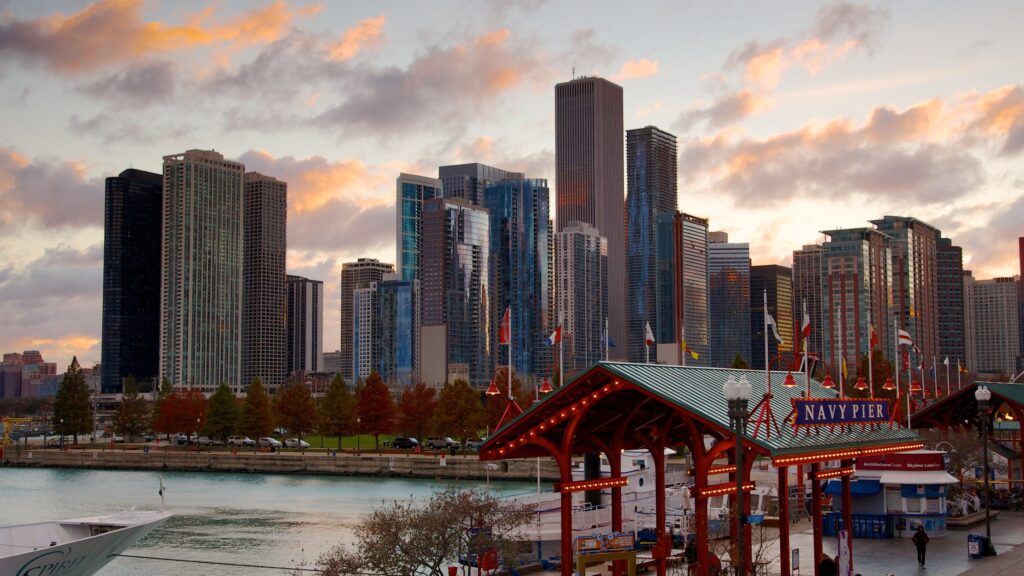
Streeterville boasts a variety of prominent landmarks and areas that are listed as historic districts. The East Lake Shore Drive Historic District, which consists of a collection of early 20th century luxury apartments, is situated at the northern side of the district and faces Lake Michigan. The Old Chicago Water Tower District is situated along Michigan Avenue, where Streeterville meets the River North and Gold Coast (Chicago) regions at Chicago Avenue. The Water Tower District holds the only public buildings that were able to withstand the infamous 1871 Great Chicago Fire. Additionally, the southern end of the Magnificent Mile is home to part of the Michigan–Wacker Historic District which includes numerous high rises and skyscrapers built in the 1920s.
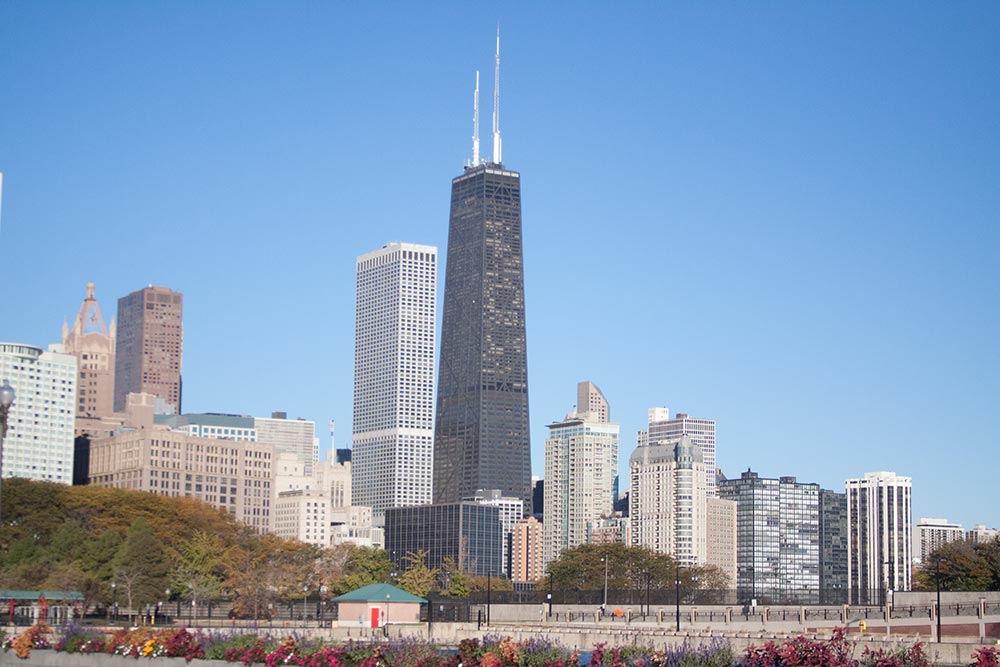
The area is home to a number of distinctive locations, such as the Jean Baptiste Point Du Sable Homesite, a National Historic Landmark and the first settler in Chicago. Properties in the neighborhood that have been included in the National Register of Historic Places are: 257 East Delaware, 860-880 Lake Shore Drive Apartments, the Drake Hotel, Fourth Presbyterian Church of Chicago, Navy Pier, and the Palmolive Building. Additionally, the area has plenty of other noteworthy spots, such as Allerton Hotel, McGraw-Hill Building, Perkins, Fellows & Hamilton Office and Studio, Tribune Tower, and the Woman’s Athletic Club. Not to mention the skyscrapers along the Magnificent Mile.
